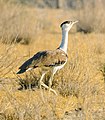The flora and fauna of Chennai are the plants and animals in Chennai, India.
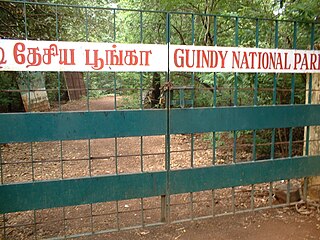
Guindy National Park is a protected area, located in Chennai, India. Spread across 2.70 km2 (1.04 sq mi), it is one of the smallest National Parks in India and one of the few national parks situated inside a metropolitan area. The park is an extension of the grounds surrounding Raj Bhavan, the official residence of the Governor of Tamil Nadu and encloses forests, scrub lands, lakes and streams.
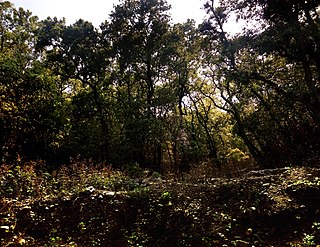
Kalesar National Park and adjacent Kalesar Wildlife Sanctuary (13,209 acres are protected areas in Kalesar of Yamunanagar district of Haryana state in India, 46 kilometres from Yamunanagar city, 122 kilometres from Chandigarh. Kalesar National Park was established in 2003. Kalesar National Park and Kalesar Wildlife Sanctuary are contiguous to Simbalbara National Park in Himachal Pradesh and Rajaji National Park in Uttarakhand. Kalesar is a popular destination for leopards, panthers, elephants, red jungle fowl and bird-watching. This forested area in the Shivalik foothills is covered primarily with sal with smattering of Semul, Amaltas and Bahera trees as well. Wildlife jeep safaris are available on 3 tracks. Park is closed July to September and during the remaining months visiting hours are 6 am to 10 am and 4 pm to 7 pm during summers, and 7 am to 11 am and 3.30 pm to 6 pm during winters.
Indravati National Park is a national park located in Bijapur district of Chhattisgarh state in India. The park derives its name from the Indravati River, which flows from east to west and forms the northern boundary of the reserve with the Indian state of Maharashtra.
Ramnabagan Wildlife Sanctuary is in Bardhaman, West Bengal, India. The animals found include spotted deer and common langur.

The state of Karnataka in South India has a rich diversity of flora and fauna. It has a recorded forest area of 38,720 km2 which constitutes 55 of the geographical area of the state. These forests support 25% of the elephant population and 20% of the tiger population of India. Many regions of Karnataka are still unexplored and new species of flora and fauna are still found. The mountains of the Western Ghats in the western region of Karnataka are a biodiversity hotspot. Two sub-clusters of the Western Ghats, Talacauvery and Kudremukh, are on a tentative list of sites that could be designated as World Heritage Sites by UNESCO. The Bandipur and Nagarahole national parks which fall outside these subclusters were included in the Nilgiri biosphere reserve in 1986, a UNESCO designation. In the Biligiriranga Hills the Eastern Ghats meet the Western Ghats. The state bird and state animal of Karnataka are Indian roller and the Indian elephant. The state tree and state flower are sandalwood and lotus. Karnataka is home to 524 tigers.

Chhatbir Zoo, is a zoological park situated close to Zirakpur, India. The zoo was constructed in the 1970s and is home to a large variety of birds, mammals and reptiles.
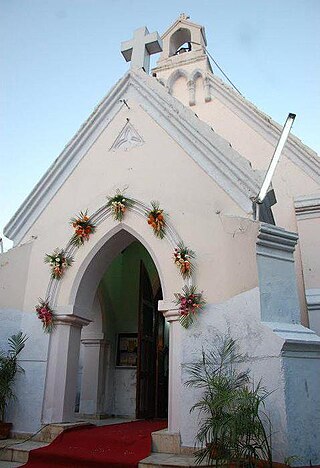
St. Thomas' Church is located in Hisar city of Haryana, India. It is located in central part of Hisar near railway station. It has been declared as a historical monument by Indian National Trust for Art and Cultural Heritage. The Church is dedicated to St. Thomas, one of the 12 main disciples of Jesus Christ.

The following outline is provided as an overview of and topical guide to Haryana.
Mahavir Stadium, built in 1972, is a multipurpose sports complex located in Hisar city of Haryana, India. It has second largest capacity in Haryana, after the Shah Satnam Ji Cricket Stadium in Sirsa which has capacity of 35,000 spectators. It is owned and operated by the District Olympic Association of Hisar. The venue is used for several events, such as cricket and football.
Bir Shikargah Wildlife Sanctuary is situated in Panchkula district of Haryana state, India. It is spread over an area of 767.30 hectares. It also houses Vulture Conservation and Breeding Centre, Pinjore.
Ch. Surender Singh Memorial Herbal Park, Kairu is a herbal and medicinal plant park in Kairu village between the cities of Bahal and Bhiwani in the Tosham tehsil of the Indian state of Haryana. It is also the location of a Chinkara Breeding Centre run by the Forests Department of the state government.
Forests Department, Haryana is a department of the Government of Haryana, a state in India, that runs and maintains many protected nature areas in the state of Haryana. It has two administrative divisions: Forest and Wildlife. The department is responsible for maintaining National Parks, Wildlife Sanctuaries and Conservation Reserves in Haryana. It also provides a special emphasis on Soil and Moisture Conservation works in the hills to conserve water and deliver it to adjacent farmlands. Two National Parks, eight Wildlife Sanctuaries, two Conservation Reserves, four Animal & Bird Breeding Centres, one Deer park, and 49 herbal parks. Kanwar Pal Gujjar has been the cabinet minister responsible for this department since October 2019. constitute the Protected Area network of the department, covering 0.75% of the state. It also maintains a list of Protected Areas in Haryana.

The Shatavar Vatika Herbal Park, Hisar, named after the shatavar herb, is a 125-acre herbal park for the conservation of several endangered ayurvedic medicinal herbs. It is located on Hisar-Dhansu road, which runs off 'Hisar-Barwala NH-52', in Hisar city of Haryana state in India.
Blue Bird Lake, Hisar is a resident and endangered migratory bird wetland habitat, lake and recreation area in the town of Hisar, in the Hisar district of Haryana State, India.
The Ch. Devi Lal Rudraksh Vatika Herbal Nature Park, in short Rudraksh Vatika, is a 184 acre forested wildlife area, wetland and herbal park for the conservation of biodiversity of over 400 endangered ayurvedic medicinal herbs in Shivalik foothills of Himalayas. It is located on the western bank of Western Yamuna Canal, 1.3 km east of NH-907, in Chuharpur Kalan village of Yamunanagar district of Haryana state in India.
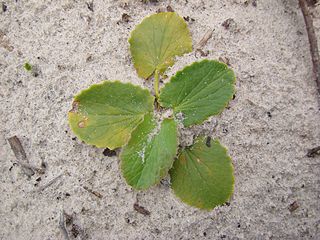
Ch. Surender Singh Memorial Herbal Park, Tosham is a herbal and medicinal plants park in Tosham town of Bhiwani district in the Indian state of Haryana.

The Mini Zoo is located on Grand Trunk Road near Pipli bus stand in Kurukshetra, Haryana, India.
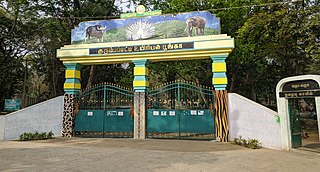
The Kurumbapatti Zoological Park is a second largest zoo in Tamil Nadu next to Arignar Anna Zoological Park, situated in the foothills of the Shervaroyan Hills, 10 km from Salem, Tamil Nadu, India. It was set up in 1981 as a small museum and was later extended to 69 Ha. The zoo houses many species of wildlife, with monkeys as the major attraction, and is in the vicinity of reserve forest, permitting visitors the opportunity to also experience the flora and fauna there. The park has a gentle topography, areas of bamboo and woodland and semi-perennial streams. Facilities include a children's playground area.










